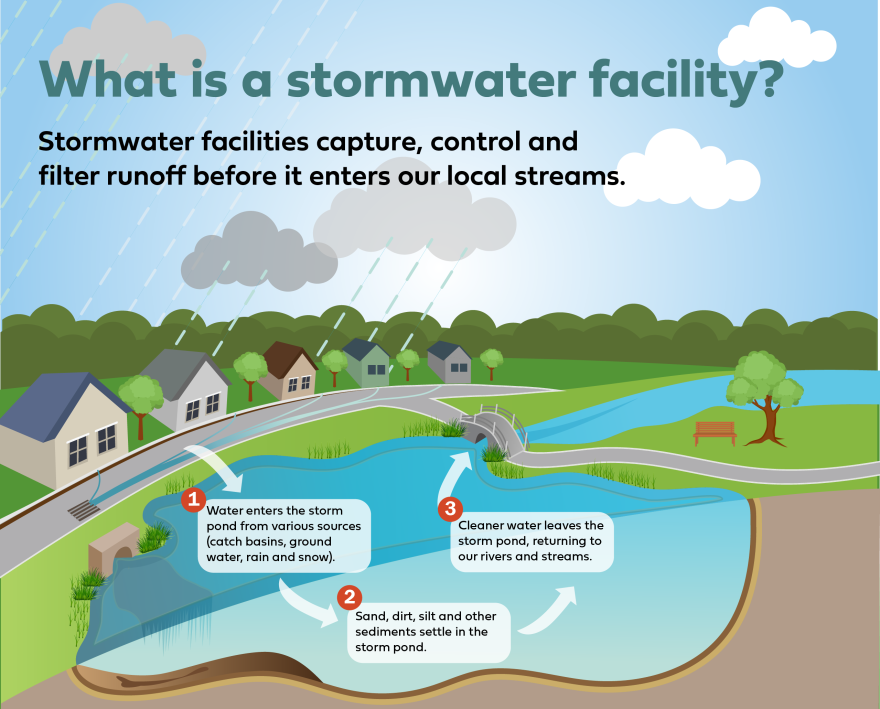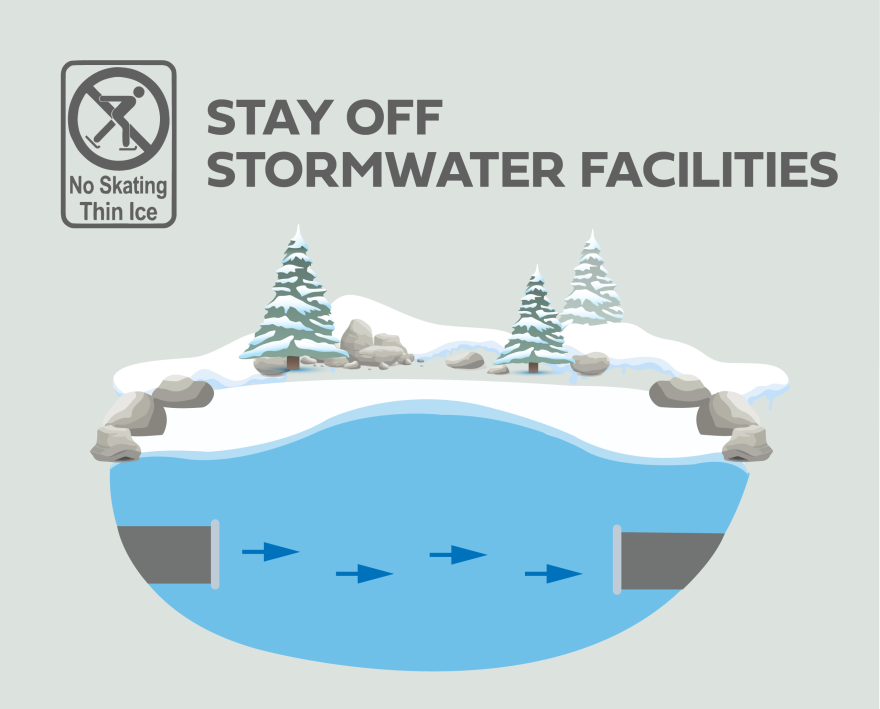How do stormwater facilities work?
Stormwater facilities capture, control and filter runoff before it enters our local streams. Cochrane Roads department operates and maintains approximately 108 kilometres of underground storm sewer main pipes, drainage swales systems, ditches, nine stormwater facilities, outfalls, oil grit separators and wetland areas.

Water enters the facility from various sources (catch basins, swales, groundwater, rain and snow). Within the stormwater facility, sand, dirt, silt and other sediments settle at the bottom. Then, cleaner water leave the facility, returning to our rivers and streams.
Trap lows
Some homes are located near a trap low, a device that controls water drainage from the street. For homes near trap lows, rainwater may accumulate on the road nearby, up to and sometimes including the driveway and a portion of the lawn. This is normal for areas with a trap low. The water should completely drain within 24 hours once the rain stops. Note: Information about the trap low may be on your property title.
Stay off stormwater facilities

Stay off all local stormwater facilities, no matter how the ice looks. There are no circumstances in which the ice on stormwater facilities is safe. While the surface may appear solidly frozen, it is not.
Stormwater continues to be released underneath the ice due to snowfall, snowmelt, road clearing and salting operations. This runoff entering the pond throughout the winter contains concentrations of salt or warmed water. This can thin ice surfaces rapidly and may not be evident from the surface. There also may be a sudden unforeseen rise in the water level, resulting in unsafe conditions.
Stormwater facilities are never safe for recreational use (sledding, skating, walking) for many reasons:
- inlet and outlet pipes keep water continuously flowing beneath the frozen top layer
- the ice surface varies in depth across the whole surface. It may appear thick in some areas, but other areas may have little or no ice. You won’t be able to tell by looking, snow often obscures holes in the inconsistent ice
- salt content in the runoff from roads impedes the water’s ability to freeze (remember: this is salt used to melt ice on the roads)
- Town crews actually lower the water level under the ice to reduce H2S gas levels. This creates a dangerous air pocket between any ice that has already formed and the top of the water
